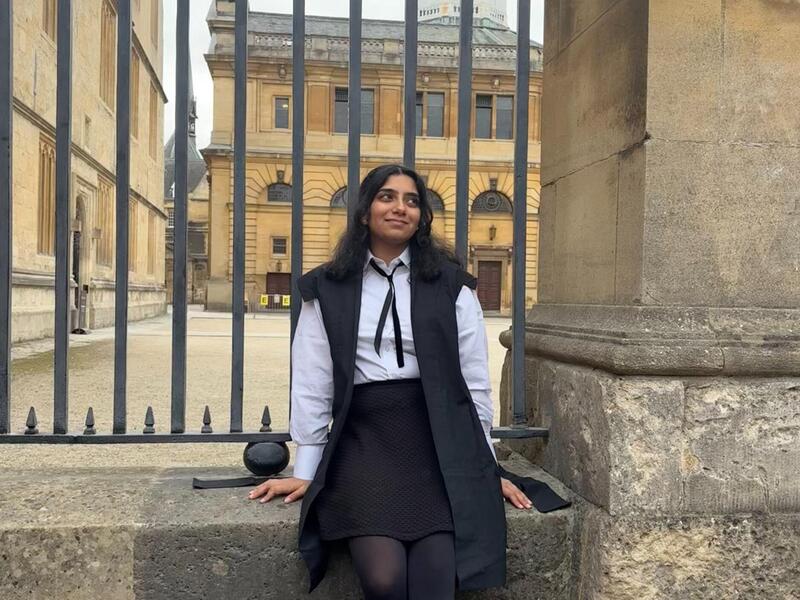March 28, 2008
Spongespace project revels in curiosity
Share this story
Audio clip: Songespace Collaboration
Photo credits: Sarah Kaufman (1-3); Myeongsoo Kim (4-8)
Hope Ginsburg, assistant professor of art foundation at Virginia Commonwealth University, brims with curiosity, revealing
a keen enthusiasm for just about any topic that presents itself. Her idea of
art, unsurprisingly, is wide-ranging and welcoming. She seems to see
possibilities around ever corner.
Earlier this year,
Ginsburg applied her natural inquisitiveness to the design of an inventive art exhibition
called "spongespace," which ran from Jan. 25 to Feb. 23 at Solvent
Space, the experimental exhibition space in the Plant Zero arts complex.
This was Ginsburg's third "Sponge" project – the first two were held at
Massachusetts Institute of Technology, where she did her graduate study.
The exhibition featured
an elaborate art installation and a series of "immersive" workshops, in which
an eccentric collection of topics was knit together to reveal a series of
unexpected relationships. The result was an animated, lively exhibition that
was forever growing and changing during its month-long run.
The three "spongespace"
workshops, each of which carried a different theme and program, were central to
the exhibition's mission. The workshops included hands-on projects, expert
speakers, projected films, the design of a headquarters and the assembly of a
Sponge Reader. In keeping with the model of sponge reproduction, the workshops
concluded when each participant conducted an immersive experience for the rest
of the group.
Ginsburg said she was
thrilled with the workshops, which included both engaged participants and entertaining
speakers, representing the worlds of art and science. She said people willing
to sacrifice their weekends to participate in the workshops tended to be those with
a robust interest in the unfamiliar – "spongy people are drawn to the Sponge process," she said.
"There was some great
bonding of the groups," Ginsburg said. "It was fun to see the Sponge model
work. It has its own momentum. It sort of takes off and people get really into
it."
Among the participants
was Althea Georgelas, a graduate student in kinetic imaging at VCU, and Matt
Spahr, an adjunct faculty member and the woodshop
coordinator for art foundation. Each exemplified the role of the workshop attendee in the Sponge model.
Georgelas created a
sound piece at the workshop that reflected the sounds of "spongespace," using "found
sound" recorded by Georgelas and her fellow workshop participants. She also led
the group on a tour of some nearby power lines – a longtime interest of hers.
Spahr, a surfer, gave a presentation on water, waves and surfing, and also made
a wooden surfboard on a roller that can be balanced on dry land with a certain
amount of effort and skill. Both the sound piece and the surfboard will become
part of the ongoing sponge exhibit that Ginsburg is compiling.
"This is a collaborative
process and the Sponge model is continuously expanding," Ginsburg said. "That's
an important part of the project."
Georgelas said she
enjoyed the interaction with fellow participants in the workshop and the
far-reaching discussions, such as the conversation sparked by sound artist Stephen Vitiello, assistant
professor of kinetic
imaging at VCU; fish neurobiologist Michael Fine,
Ph.D., professor of biology at VCU; and oceanographic robotics engineer Brian
Bingham, Ph.D., an assistant professor of mechanical engineering at the
Franklin W. Olin College of Engineering and a visiting scientist at the Woods
Hole Oceanographic Institution.
"That was very cool to
watch," Georgelas said. "They have three different specialties, but they really
related to each other well and they found a lot of connections in their work.
It was exciting to see how interested they were in each other's work."
Georgelas said
Ginsburg's energy was infectious, and the workshop itself would have an impact
on her artistic pursuits, reminding her to follow inspiration and interest
wherever it leads her and to avoid concerns about whether something fit into
one artistic category or another. Georgelas said variations of the word
"sponge," which were ubiquitous in Ginsburg's exhibit, have even entered her personal
lexicon.
"Art is very much Hope's
life, and this showed me that you shouldn't have to separate one from the
other," Georgelas said. "I learned a lot about being open to things."
The "spongespace"installation
itself was designed to feel immersive and sensorial. Visitors were treated to
an interpretation of the sea sponge's sea floor habitat. Solvent Space's large
main room featured two vibrant wall paintings that ran the length of the
gallery. The paintings, which were designed by VCU graduate student Leah Beeferman, depicted the flow of water
through two asconoid sea sponges. Vitiello designed a soundscape for the
exhibit that was inspired by undersea sonar navigation. There was also a
projection screen, showing an underwater documentary, and a seating area in the
gallery.
In addition, the large,
back room of the gallery housed a fully operational wool felt-making studio,
and, on a second-floor balcony space, a slide show played images taken by
artist Dana Sherwood of an Indonesian reef at low tide.
The VCU School of the Arts and its Department of Painting and
Printmaking operates Solvent
Space,
which is located at the corner of Hull and Fourth streets in Richmond, in cooperation with
Plant Zero.
Subscribe to VCU News
Subscribe to VCU News at newsletter.vcu.edu and receive a selection of stories, videos, photos, news clips and event listings in your inbox.



